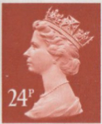How you actively choose to define Money means you’ll either steer your investment ship cheerfully into calm seas with a favourable wind in your sails or you’ll scuttle it onto the rocks. It will be one or the other because the two outcomes are mutually exclusive.
If you embrace the notion that Money is not Currency, then the risk which really matters to a three-decade retirement will be clear to you which means you’ll understand the rightful place of an investment portfolio in the service of a written financial plan. Furthermore, you will accept to your eternal joy that the only place for an investment portfolio is in the service of a financial plan and nowhere else.
A plan can be a sophisticated financial and estate plan, a simple retirement distribution plan or even a one-page investment policy statement. That can’t matter if you have nothing now; it only matters for the moment that you have something which is active, formal, robust, reviewed and written down.
Why? Because retiring comfortably and then remaining comfortably retired (or financially independent if you prefer) depends on two fundamentals:
- Whether you have a written down a financial plan for growing your income at a premium to the upward slope of your living costs which is actively reviewed with a real planner every year (it can’t be static).
- Accepting that the challenge is not primarily the safeguarding of your capital. The preservation of purchasing power must be the locus of your attention.
Think of a first-class postage stamp[1] as the total of all your expenses. We’ll use it to show the very gradual, subtle and yet very harmful effects of rising living costs on the purchasing power of your money in everyday life, over the long term.
If you are a ‘War-baby’, a ‘Baby-Boomer’, a ‘Gen X’ or a ‘Gen Y’ person, then you’ll remember this. ‘Gen Z’? You could look it up, but it’s coming to you as well.
What did a first-class stamp cost in 1992?

What about 25 years later in 2017?

1992 – 2017 is a reasonably conservative investment return period among all the 25-year retirement terms over the 118 years since 1900.[2] It’s less than average over the term and takes in a variety of ‘crises’: for example, the recession of 1990-1 just ended; Black Wednesday, the Dotcom Bubble, 9/11, London Terror Attack, Global Financial Crisis 2008/09, European Sovereign Debt Crisis, Chinese Stock Market Crash and of course the Brexit Vote. There were two UK bear markets of -43% lasting 2 years 4 months and -41% lasting 1 year 3 months. In spite of all this, many Good Companies Of The UK And The World carried on trading profitably as reflected in the three bull markets across the period lasting 12 years 10 months of 427%, 4 years 10 months of 104% and 9 years and counting of 180% as of 2017.
With the scene set, retiring in 1992, suppose all you needed to buy was one 24p first-class stamp to represent all your living costs. Investing in ‘safe’ bank accounts in 1992 would have given you an average interest rate of 8.19% p.a.[3]
You have a lump sum of £6 which is 25 times your living costs. At 8.19% p.a. your income is double the 24p you need (8.19% x £6 = 48p). Why do anything ‘risky’?
‘Risky’ is exactly what you did. If your interest remained at 1992 levels, your 48p in 2017 would not buy your first-class stamp which is now 65p. Let that thought – not least its implications to your dignity and independence – percolate for a bit.
Welcome back. Did you work out how to cut your living costs by over 25% by paring your standard of living to the bone? Or would you be compounding the problem by gouging chunks out of your £6 capital?
Except it’s worse. Interest rates are now on average 1.00% p.a. and therefore your income is closer to 6p against the 65p you need it to be. This is a colossal 92% cut in your standard of living.
How could that calamity creep up on your Retired Self, a careful person who rejected ‘risky’ equities for ‘safe’ fixed interest investments for sincere and genuine reasons? The answer is that you misunderstood risk and safety in not one, but two ways:
- You over-estimated the risk holding equities (“stocks and shares”) for the long run.
- You under-estimated the risk of not holding equities (“stocks and shares”) for the long run.
Your living costs rose by over 2½ times. A portfolio the Good Profitable Companies Of The World would have seen the value of your capital rise by almost 7½ times[4]. Had you invested for dividend income instead of interest income, your income and capital combined would have exceeded the 65p you needed and with some left over for you and your legatees. But most importantly, you would be fairly sure your money would outlast you, not the other way around. You could have done some things sooner, without running out.
How is it that risk is misperceived in the first place? Lots of influences which we’ll cover another time, but it starts with our paradigm of Money – how we decide to see what Money is and what it is not.
Loss of purchasing power is the real risk to the maintenance of our dignity and independence in a three-decade retirement. Three decades is the long run so the only sensible and logical definition of “money” is what it can buy in the long run. We start there.
Currency is the folding stuff in your wallet or purse. It is just pounds and pence. It loses some of its purchasing power every year. The effects are not noticed day by day, rather like lack of exercise. If we don’t exercise today or eat fast food today, do we notice tomorrow? No. But compounded over time? Yes. Even if you perfectly preserve your principal amount of currency (the £6 above), when your cost of living doubles (as it surely will), you will have lost half of your money.
So, what can be done about this very real risk? We saw that investing in the Good Profitable Companies Of The World (Equities or “stocks & shares”) have proved to be a reliable hedge against the loss of purchasing power (inflation risk) over the long term. In future updates, we’ll look at where the purchasing power quality of equities comes from.
I will leave you with something which seems unbelievable, but is the pure unvarnished truth supported by empirical evidence: the real long-term risk of owning equities is embedded not in the values of the companies in whose shares we invest, nor even in the global economy, but in human nature and our proclivity to ‘misbehave’ when it comes to investing.
But don’t despair. It is fortuitous that behaviour is the dominant determinant of the returns that investors receive from the returns available to them on their investments because it is the one thing we can improve with the help of a trusted behavioural investment planner on hand and a plan. Everything else is outside our control but it turns out that this doesn’t matter because they are only refinements.
We hope that our occasional updates provide you with some valuable content and food for thought. Keep tuning in!
As always, if this approach resonates with you, we’d love to help you make a start on your journey. Just give us a call, drop us an email or pop in and we’ll facilitate your tailored GL Passport as your first step, with our compliments.
Until the next time, let me leave you with this quotation:
“The farther you can look back, the farther forward you are likely to see.” ― Winston Churchill
Kind Regards
[1] Murray, N. (2008) Simple wealth, inevitable wealth. 3rd edn. United States of America: The Nick Murray Company, Inc., pp.83-85. I am indebted to Nick Murray, a veteran financial professional of over 50 years’ experience for the idea for this illustration, adapted to this example.
[2] TimelineApp (2018) [online]. Available at: https://www.timelineapp.co [Accessed: 03 April 2018]
[3] Swanlowpark (2018) 1987 to 2002 quarterly average gross rate for a building society share account as collected by the Building Societies Association. [online]. Available at: http://www.swanlowpark.co.uk/savings-interest-annual.jsp [Accessed: 03 April 2018]
[4] TimelineApp (2018) [online]. Available at: https://www.timelineapp.co [Accessed: 03 April 2018] Using historical asset class returns and inflation from 1992 – 2017 for a portfolio of the typical large cap, small cap, value global equities. After 1% annual costs, the value of £100,000 in 1992 would have grown to £738,746 in 2017 which is 8.32% p.a. In real terms after inflation, it would be £453,021 which is a real return above inflation of 6.23% p.a.

Andrew Stinchcomb
Lead Navigator
Certified Financial Planner™ professional
Chartered Wealth Manager™
Investors should remember that the value of investments, and the income from them, can go down as well as up. This update has been produced for information purposes only and isn’t intended to constitute financial advice; investments referred to may not be suitable for everyone.



